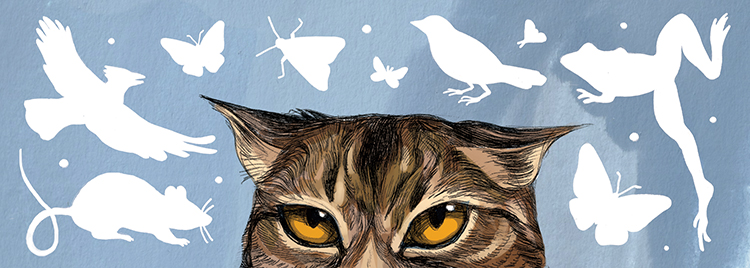 story by bernard brown | photo by flickr user kintiredIt took my wife Jen about five minutes to spot two rats (I missed the first) running toward an overflowing trash can near the center of Rittenhouse Square. No one else saw them. True, it was dark, but the park was filled with couples chatting on benches, bar-hoppers strolling through, a circle of twentysomethings sitting on the grass a few yards away and a handful of homeless folks bedding down for the night. Rats are good at this; they stay underground until dark, and then they tend to stick close to walls (or lines of shrubbery), zipping along like ripples in the shadows.
story by bernard brown | photo by flickr user kintiredIt took my wife Jen about five minutes to spot two rats (I missed the first) running toward an overflowing trash can near the center of Rittenhouse Square. No one else saw them. True, it was dark, but the park was filled with couples chatting on benches, bar-hoppers strolling through, a circle of twentysomethings sitting on the grass a few yards away and a handful of homeless folks bedding down for the night. Rats are good at this; they stay underground until dark, and then they tend to stick close to walls (or lines of shrubbery), zipping along like ripples in the shadows.
The brown rat, or Norway rat (Rattus norvegicus), has only been living with us for a few hundred years. The rat that brought the Black Death was the black rat (Rattus rattus), slightly smaller, with bigger ears, and a preference for climbing and living in roofs rather than burrowing and living in sewers. Both species hail from Asia. The brown rats pushed the black rats out of most of Europe and made it to our shores (our native rat species don’t dig urban living) in the mid-to-late 1700s. William Ferraro, chief of Vector Control Services for Philadelphia’s Health Department, said they occasionally find a black rat in Philadelphia; otherwise, they’re all browns.
Lucky for us, we scare them. “They don’t want to come in contact with us,” emphasizes Michelle Niedermeier, Community Integrated Pest Management and Environmental Health Program Coordinator for the Penn State Extension in Philadelphia.
Generally the rodents you find indoors are mice. “Most of the time [that] people think they’ve seen a rat, they haven’t,” says Niedermeier. We see a mouse darting into a hole and recall it as bigger. We see a possum waddling under the porch—I’ve seen plenty around West Philly—and presto, it’s a cat-sized rat.
Even if they’re smart enough to avoid us, rats will stick close to our garbage. They often put their homes near dumpsters so that they don’t have to walk far from the burrow (a single colony of two to eight rats will have at least one main entrance and one emergency exit) for a meal. Indeed, a great way to attract rats is to present them with trash cans full of food waste or leave out food intended for other animals, whether bread crumbs for pigeons or cat food for Fluffy.
Most of our rats are beneath our feet—the sewer system is rat heaven. As Ferraro puts it, “It doesn’t get too hot or too cold, they’re left alone, and we feed them down there.” Next time you run dinner scraps through the garbage disposal, think of the humble rats waiting below for their smoothie.
Perhaps it is a luxury to philosophize about them—decades of active rodent control and public health measures mean they generally don’t spread fatal illnesses to us anymore, don’t eat our food until we throw it away and don’t bite us. Ferraro noted fewer than 15 reported rat bites in Philadelphia per year. But for now, I’m fascinated by them as our commensals, members of our immediate ecosystem, worthy of observation and certainly of admiration. It’s hard to imagine modern humans without rats. Wherever we are, rats will be running through the shadows we cast.
Bernard Brown is an amateur field herper, part-time bureaucrat and director of the PB&J Campaign (pbjcampaign.org), a movement focused on the benefits of eating lower on the food chain. Read about his forays into the natural world at phillyherping.blogspot.com.
Got Rats?
Call Philly’s Rat Complaint Line at 215-685-9000 for an inspection, help with treatment and tips for making your home rodent-free. Also check out Penn State’s Integrated Pest Management (extension.psu.edu/ipm) for pesticide-free ideas to control all sorts of pests.



